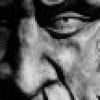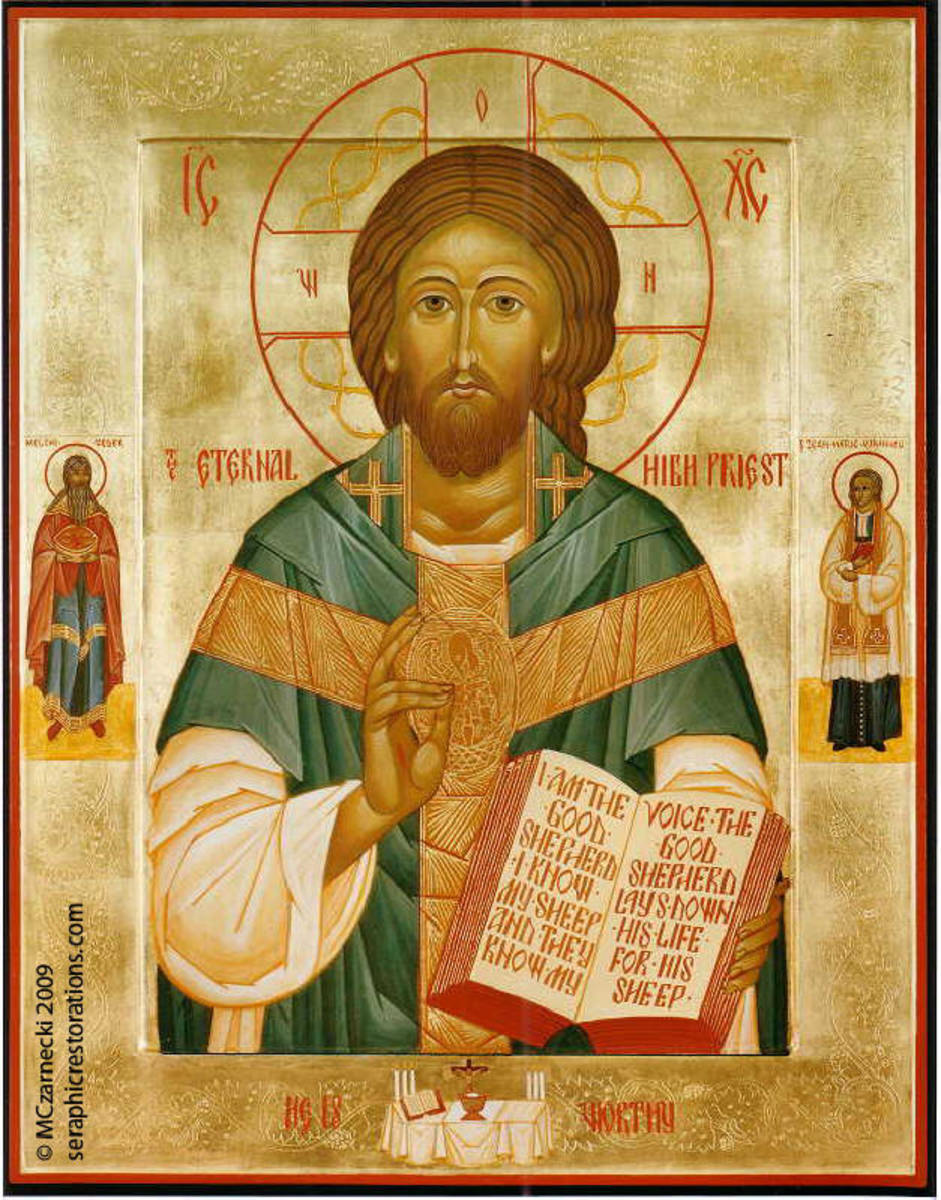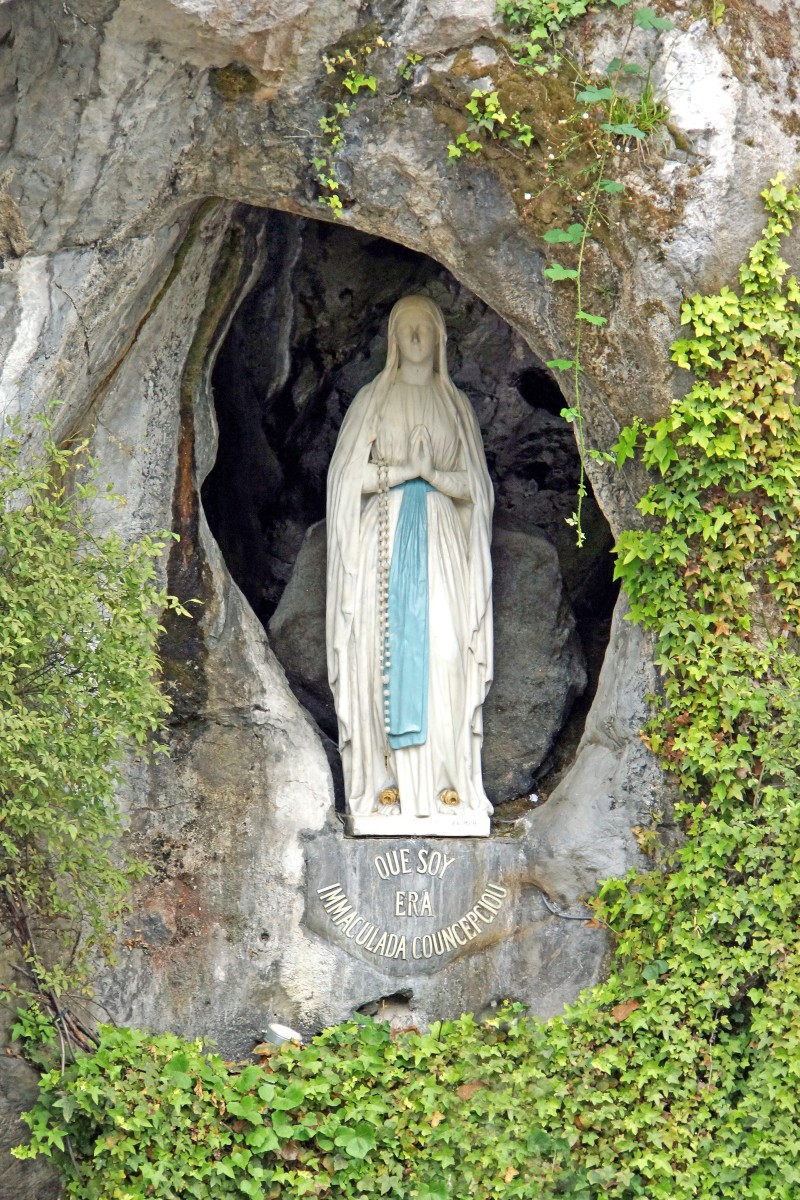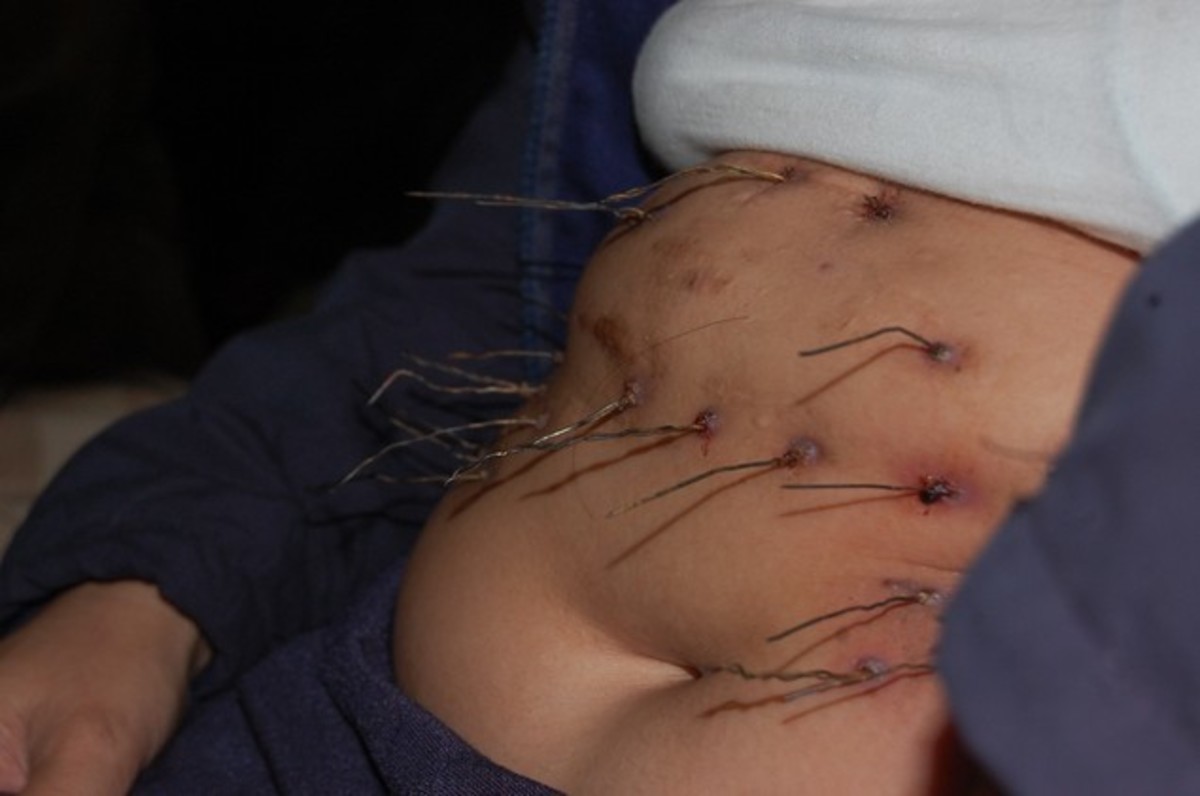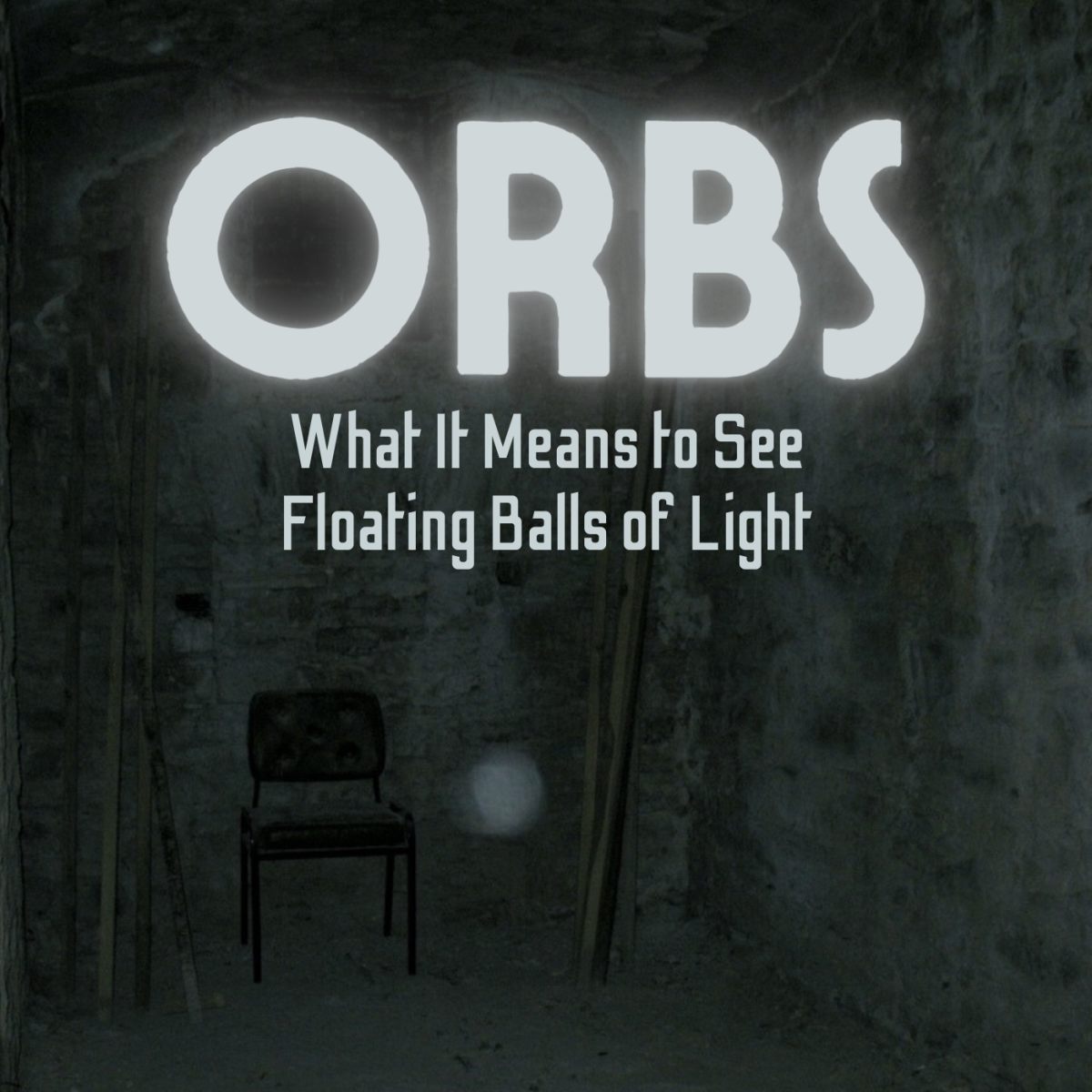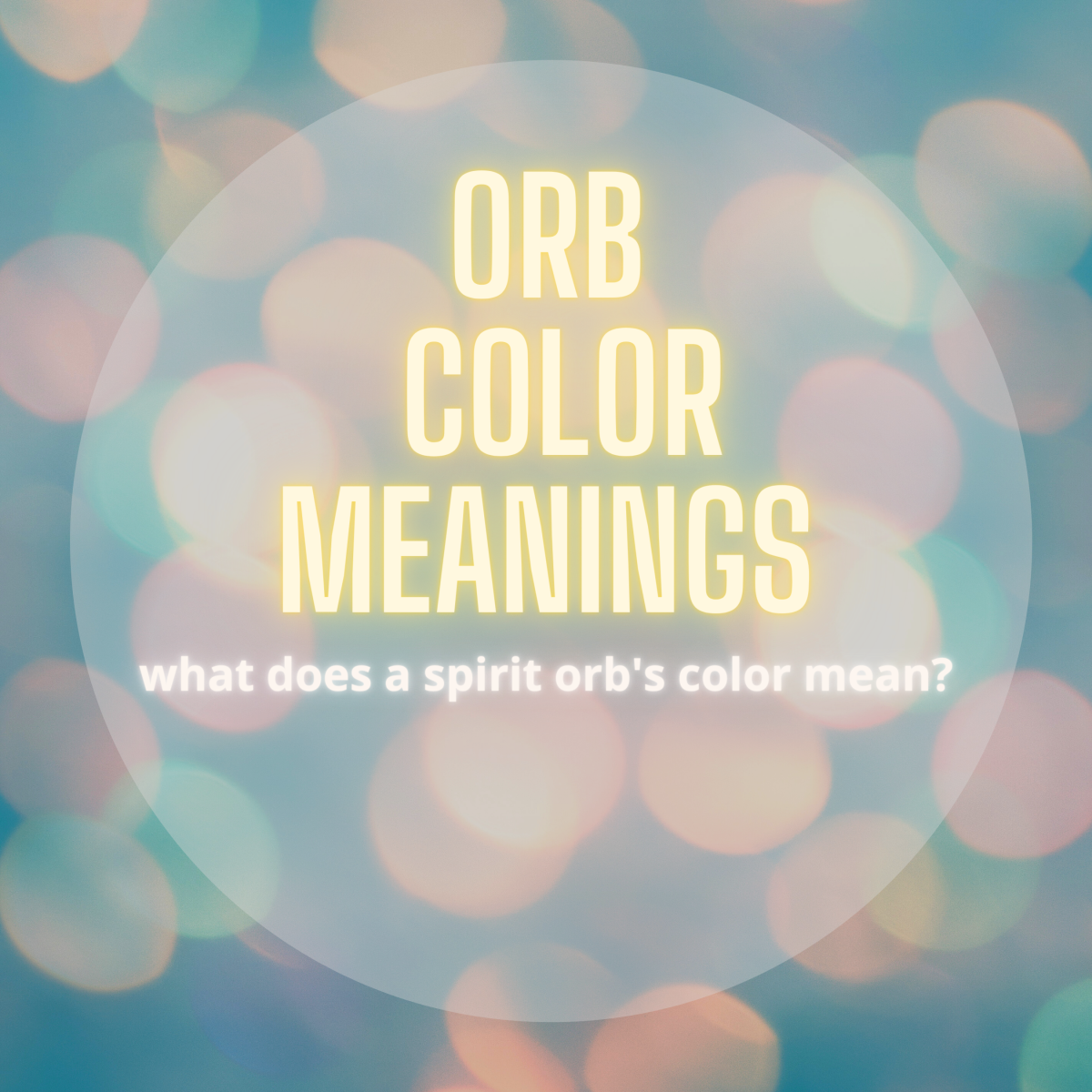Bleeding Bread of Bolsena
Pope Benedict XVI, May 2007.
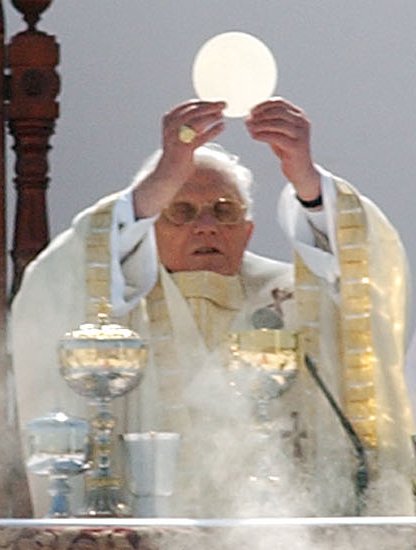
The Eucharist: Some explanations
For anyone who doesn't know, many Christian religious denominations (and particularly in Catholicism) recognize something known as the Eucharistic Miracle. This is simply any miracle involving the Eucharist.
A miracle event is said to have happened at Bolsena in Italy during Medieval times (13C), whereby during a religious mass, blood is said to have become visible on the sacramental wafer... The bread began to bleed!
Let me back up and provide some basic information first before delving into the MIRACLE!
:)
There are many aspects and functions to the Eucharist. It is a ritual, it can also be the name for the objects used in the ritual. In church terms it is a sacrament (ritual) as well as a sacrifice (object used in the ritual). Most often, the sacrificial objects are holy water and bread, both considered to contain the spirit/essence/concept of Jesus Christ. To understand which is being talked about, sometimes one has to listen carefully to the context in what is said because the word Eucharist is used interchangeably to mean the ritual and/or the object in the ritual.
Rituals involving bread and holy water are observed by other denominations in addition to Catholic traditions but Catholicism is what usually comes to mind when rituals involving bread and water are being discussed. Among Christians is a belief that Jesus told his disciples, at the Last Supper, to honor him via this ritual. We can find proof of this in scriptures, most notably:
ISAIAH 62: 8-9
The LORD has sworn by his right hand and by his mighty arm: "I will not again give your grain to be food for your enemies, and foreigners shall not drink your wine for which you have labored; but those who garner it should eat it and praise the LORD, and those who gather it shall drink it in the courts of my sanctuary."
If we look into the scriptures at any length, we can easily find that, although Jesus directed his peers in the way mentioned above, the concept of the ritual wasn't a brand new set of ideas. It seems to have been a fairly widespread custom of the day to reverently involve food and drink as symbolic honors and sacrifices to people in honorable positions. In Genesis 14: 18-19, we can find King Melchizedek bringing out wine and bread for a special occasion.
Genesis 14:18-19
"And Melchizedek, King of Salem, the priest of the Most High God, took bread and wine, And blessing him [Abram], said, May the blessing of the Most High God, maker of heaven and earth, be on Abram."
These verses in context: Abram has just returned from going to war to retrieve some things and people taken during a military attack which killed the leaders of Sodom and Gomorrah and caused any of the population who could flee to run up into the mountains. Abram's nephew, Lot, was kidnapped during this attack, so once Abram was successful in his response attack, he recovered Lot, some goods and foods previously taken out of Sodom and Gomorrah, and brought everything and everyone he set out to get back. Then he met with the King of Salem, and a ritual was conducted. Melchizedek and Abram (and probably their peers and charges) marked this event/success, bringing the concept of God forth to signify the importance of all going on in their realms and so on.
(I'm sure scholarly Christians will gasp and groan at my treatment of Scriptures here but I just intended to put out the general theme of this section of Genesis 14).
According to my (scant) knowledge of Scriptures, sharing bread and wine, food and drink, is special and important both communally and spiritually, aiding in bringing people closer together and in bringing honor to God - to put people in a state of respectfulness, awareness of God and each other.
Naturally, with all these associations attached to food and drink, the holy water and bread, Jesus' message to his disciples, and a widespread cultural observance of breaking bread and sharing wine, the whole Eucharist thing is quite an important and complex concept to honor.
Naturally, when, in the 13th Century, the bread used in the ritual began to bleed, THIS WAS A REALLY BIG DEAL - A MIRACLE!
Eucharist and Confession, Explained
Special Prayer and Symbolism
The special prayer used here is called the Eucharistic Prayer and Catholics believe by properly engaging in this prayer, the wine and bread symbolically change to the blood and body of Christ so that when people eat the bread and drink the wine, they are taking in the body and blood of Christ. By this consecration, the special purpose of this particular ritual is to associate the objects used with the sacred concepts of Christ's body and blood, almost like calling upon the powers that be to help command that the objects become infused with holiness - instead of being just bread (or special bread wafers) and a beverage.
Scholars often use the term "Transubstantiation" to describe the symbolic but not physical changes intended to be experienced in this ritual.
Usually, there is no detectable physical change to the bread or wine, and this is normal - most of the transubstantiation involves a faith and some abstract thinking to believe that the bread and wine become holy.....except in the case of the Bleeding Bread of Bolsena - when the red blood physically appeared on the bread.
Legend (?) of the Bleeding Bread
We can't be certain that the Bleeding Bread of Bolsena isn't a legend rather than documented fact/happening. There is mention of the event (supposedly happened in 1263) in records of the Catholic Church but not by church officials one would expect to report the incident.
Nonetheless, here is the story:
A German priest by the name of Peter of Prague was visiting Italy - on pilgrimage to Rome. It is said that he was uncertain about the transubstantiation and doubted that The Christ became a Real Presence in the Eucharist/holy items.
The priest attended Mass above the tomb of St. Christina in Bolsena. As he was speaking the words of consecration, it is said that blood started to drip off the consecrated Host, falling onto the altar and corporal (piece of ceremonial cloth covering the altar). At first, the priest attempted to hide what was going on but soon interrupted Mass to ask to see Pope Urban VI who resided in this area at the time - in Orvieto.
Pope Urban VI sent the proper religious officials to investigate the priest's claims. The delegates gathered up evidence and were in the process of transporting when Pope Urban VI requested the items be brought to be examined at the cathedral of Orvieto.
From this point, the Pope witnessed what was necessary and responded by selecting St. Thomas of Aquinas some documents on the matter - which the Pope used one year later when instituting the feast of Corpus Christi.
Problems
The problem with this whole account is that Pope Urban VI's biographers are notably silent on this matter even though they documented his stay at Orvieto in quite a great deal of detail - including Mass events he attended and, especially, his institution of the feast of Corpus Christi.
The event is really only referred to again much later and after the canonization of St. Thomas Aquinas and in the early 1300's, which seems a late date to bring the whole matter up if it happened and was a pivotal event Pope Urban VI knew of.
As well, there are "versions" of this story. In some accounts, it isn't mentioned that the German priest was having doubts about the finer details of transubstantiation. In other versions, drips from the chalice onto the corporal are the focus. Sometimes the tale is known as "Miracle at Bolsena" or "Blood-Stained Corporal" (drips from the chalice version) and other times, "The Miracle Bread" or "Bleeding Bread of/at Bolsena."
